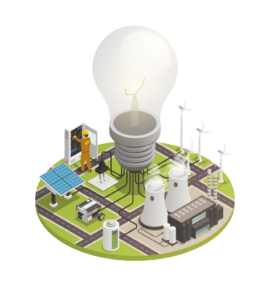1. Computer Science Engineering

- Computer Science: Computer Science (CS) is the study of computers and computing technologies. It involves both theoretical and practical aspects of computing. Computer scientists focus on algorithms, data structures, programming languages, artificial intelligence, machine learning, computer graphics, software development, and more. They work to develop new technologies, improve existing systems, and solve complex problems using computational methods.
- Engineering: Engineering is a broad field that involves designing, building, and applying various technologies to solve real-world problems. Within engineering, there are numerous disciplines, such as electrical engineering, mechanical engineering, civil engineering, and more. In the context of your query, you might be referring to different branches of engineering related to computer systems, such as Computer Engineering or Software Engineering.
- Computer Engineering: Computer Engineering combines principles of electrical engineering and computer science. It focuses on the design and development of computer systems, including hardware components, microprocessors, digital systems, and embedded systems.
- Software Engineering: Software Engineering is concerned with the systematic design, development, testing, and maintenance of software applications and systems. Software engineers work on creating efficient and reliable software solutions that meet specific user needs.
2. Electrical Engineering

Key areas of focus within electrical engineering include
- Circuit Analysis: Understanding and analyzing electrical circuits, which are networks of interconnected components like resistors, capacitors, inductors, and voltage/current sources.
- Electromagnetics: Studying the behavior of electromagnetic fields, including concepts such as electromagnetic waves, antennas, and the interaction between electric and magnetic fields.
- Electronics: Designing and working with electronic components and devices, such as transistors, integrated circuits, diodes, and sensors.
- Power Systems: Dealing with the generation, transmission, distribution, and utilization of electrical power. This includes designing power plants, substations, and distribution networks.
- Control Systems: Developing systems to control and automate processes, ranging from industrial machinery to robotics, by using feedback loops and control algorithms.
- Telecommunications: Designing and optimizing communication systems, such as wireless networks, fiber optics, and satellite communication.
- Digital Signal Processing: Processing and analyzing digital signals, such as audio, images, and data, to extract useful information or apply specific operations.
- Microelectronics: Designing and fabricating integrated circuits and microelectronic devices, often using advanced techniques in nanotechnology.
- Computer Engineering: Overlapping with electrical engineering, computer engineering involves the design of computer systems and hardware, including microprocessors and memory systems.
- Renewable Energy: Working on technologies related to solar power, wind energy, and other renewable sources of electricity generation.
Electrical engineers often use tools like computer-aided design (CAD) software, simulation tools, and specialized programming languages to model, analyze, and develop electrical systems. They may work in various industries, including energy, telecommunications, electronics, manufacturing, aerospace, and more.
3. Electronics and Communication Engineering

Key areas of focus within Electronics and Communication Engineering include
- Analog Electronics: Designing and analyzing analog circuits and systems, which involve continuous signals. This includes amplifiers, oscillators, filters, and analog signal processing.
- Digital Electronics: Working with digital circuits and systems that use discrete signals, such as binary code. This includes logic gates, flip-flops, counters, and microprocessors.
- Microelectronics: Designing and fabricating electronic components and devices at the microscale, including integrated circuits and microprocessors.
- Signal Processing: Processing and analyzing signals, such as audio, video, and data, to extract information or enhance quality. This includes areas like image processing, speech processing, and data compression.
- Communication Systems: Designing and analyzing systems for transmitting and receiving information over various communication channels. This includes wireless communication, optical communication, and data networking.
- Telecommunications: Developing technologies related to voice and data communication, including mobile networks, satellite communication, and fiber optics.
- Antennas and Propagation: Designing and optimizing antennas for wireless communication systems and studying how electromagnetic waves propagate through different mediums.
- Control Systems: Applying control theory to design systems that regulate and control various processes, such as in automation, robotics, and industrial applications.
- Embedded Systems: Designing and developing embedded systems, which are specialized computing systems integrated into other devices or products.
- VLSI Design (Very Large Scale Integration): Designing and fabricating integrated circuits with a high density of components, often used in advanced electronics and microelectronics.
- Wireless and Mobile Communication: Working on technologies related to cellular networks, wireless protocols, and mobile device communication.
- Digital Signal Processing: Applying algorithms and techniques to process and manipulate digital signals, often used in applications like audio and image processing.
ECE engineers play a crucial role in the development of modern technologies, such as smartphones, computers, communication networks, medical devices, and more. They work in various industries, including telecommunications, electronics manufacturing, aerospace, consumer electronics, and research and development.
4. Civil Engineering
Civil engineering is a broad field that focuses on the design, construction, and maintenance of infrastructure projects and systems. These systems are essential for the functioning of modern society and include structures like roads, bridges, buildings, airports, dams, water supply systems, and sewage treatment facilities. Civil engineering integrates principles of physics, mathematics, and materials science to solve real-world problems and improve the built environment.

Key Areas of Civil Engineering:
- Structural Engineering:
- Focuses on the design and analysis of buildings, bridges, towers, and other structures to ensure they can withstand various forces and stresses.
- Structural engineers ensure that these constructions are safe and stable, using materials like steel, concrete, timber, and composites.
- Geotechnical Engineering:
- Concerned with the behavior of earth materials (soil, rocks) and how they affect the foundation and stability of structures.
- Geotechnical engineers design foundations, retaining walls, and tunnels, ensuring that structures remain safe and functional even under shifting soil conditions.
- Transportation Engineering:
- Involves the design, development, and maintenance of transportation systems such as roads, railways, airports, and mass transit systems.
- Transportation engineers focus on improving traffic flow, safety, and efficiency for moving people and goods.
- Water Resources Engineering:
- Focuses on the management and distribution of water, designing systems for water supply, drainage, flood control, and sewage treatment.
- Water resource engineers are involved in projects like dams, irrigation systems, and hydropower plants.
- Environmental Engineering:
- Deals with designing systems to protect and improve environmental health, such as waste treatment facilities, recycling plants, and air pollution control systems.
- Environmental engineers work on reducing pollution and mitigating the impact of human activities on ecosystems.
- Construction Engineering and Management:
- Combines civil engineering principles with project management skills to oversee the planning, construction, and maintenance of infrastructure projects.
- Construction engineers ensure that projects are completed on time, within budget, and according to design specifications.
- Urban and Regional Planning:
- Civil engineers play a key role in urban planning, helping to design and optimize cities’ infrastructure for population growth, sustainability, and resilience.
- This involves designing systems for transportation, utilities, housing, and green spaces.
Civil Engineering Process:
- Design: Using engineering principles, calculations, and software tools (like AutoCAD, Revit, or STAAD Pro), civil engineers create blueprints for new infrastructure projects.
- Surveying: Civil engineers conduct land surveys and gather data on terrain, soil conditions, and environmental factors to inform the design process.
- Construction: Managing on-site construction activities, civil engineers ensure the project is built to specifications while adhering to safety and quality standards.
- Maintenance: After construction, civil engineers continue to monitor the structure’s performance and conduct repairs and upgrades as necessary.
Importance of Civil Engineering:
Civil engineering is vital for societal development and economic growth, as it provides the necessary infrastructure that allows cities to function efficiently and sustainably. From designing earthquake-resistant buildings to developing flood control systems, civil engineers play a critical role in creating safer and more resilient communities.
5. Mechanical Engineering

Mechanical engineering focuses on the design, analysis, manufacturing, and maintenance of mechanical systems. It applies principles from physics and materials science to create machines and devices that solve practical problems.
Key Areas:
- Thermodynamics: Study of heat and energy, used in designing engines, power plants, and HVAC systems.
- Fluid Mechanics: Understanding fluid flow, essential for designing vehicles, pipelines, and hydraulic systems.
- Mechanics of Materials: Ensures structures can withstand forces like tension and compression.
- Dynamics and Control: Focuses on motion and control systems for robotics and machinery.
- Manufacturing: Involves optimizing production processes and using technologies like CNC machining and 3D printing.
- Robotics: Design of automated machines, combining mechanical, electrical, and computer engineering.
Applications:
- Automotive: Car engines, suspension systems.
- Aerospace: Aircraft, spacecraft.
- Energy: Power plants, renewable energy systems.
- Healthcare: Medical devices, prosthetics.
Mechanical engineers play a key role in advancing technology across industries, from transportation to healthcare.
Let me know if you want to explore any area in more detail!
